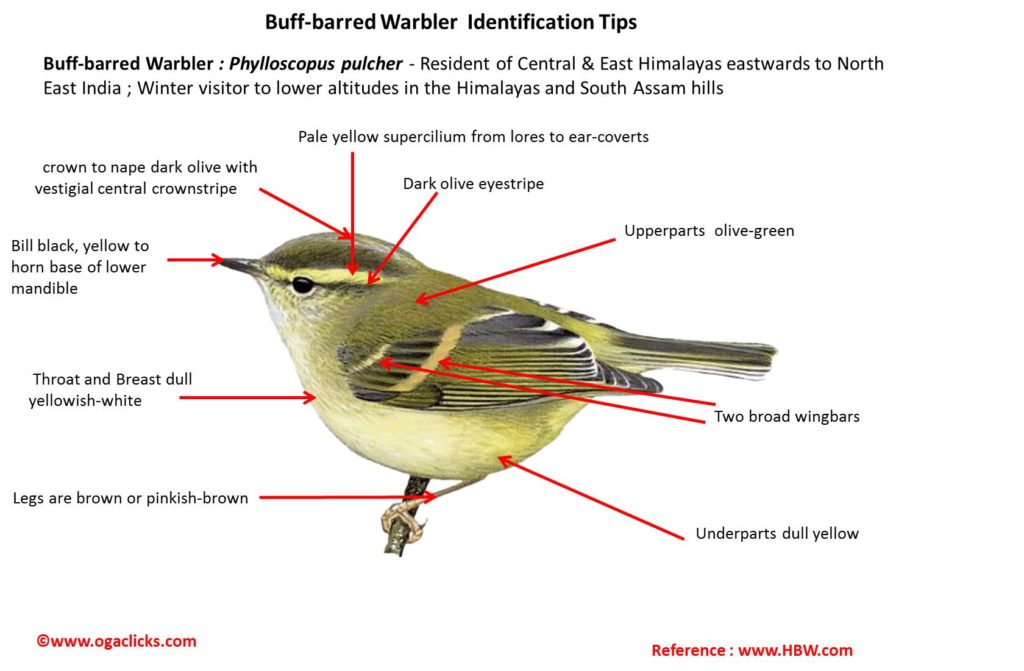
Buff-barred Warbler Phylloscopus pulcher
Etymology :
Nominate
- Phylloscopus : Greek word phullon – leaf; skopos – seeker
- Pulcher : Latin word for “ Beautiful, handsome”
Subscpecies:
- p. kangrae : kangrae – From Kangra district in Himachal Pradesh, India
Distribution in India:
- Nominate- Resident of Central & East Himalayas eastwards to North East India ; Winter visitor to lower altitudes in the Himalayas and South Assam hills
- p. kangrae– Resident of North West Himalayas (Kashmir East to Uttarakhand); Winter visitor at lower altitudes.
Description: Size of 10–11 cm; wt. of 5·5–7·5 g. It is a small to medium-sized leaf-warbler with long supercilium, two wingbars, pale yellow rump and white in outer tail feathers. The nominate race has pale yellow supercilium from lores to ear-coverts, narrow dark olive eyestripe; crown to nape are dark olive with vestigial central crownstripe, becoming buffish-brown with olive tinge on mantle, back and scapulars. The rump is pale yellow or straw-yellow; upperwing-coverts as scapulars, tips of median coverts are olive-yellow, tips of greater coverts are broadly orange-buff or yellowish; flight-feathers are dark brown, edged olive-green, tertials are tipped buffish-yellow. The tail is dark brown or blackish, three outer feathers are mostly whitish on outer webs; dull or dingy yellow below, brightest on belly and undertail-coverts. The iris is dark brown; bill is black, yellow to horn base of lower mandible; legs are brown or pinkish-brown. Both the sexes are alike. The juvenile is similar to adult, but generally less olive on upperparts and duller or greyer below. Race kangrae has paler, more yellowish-olive crown and upperparts and slightly paler underparts than nominate.
Habitat: It is breeds between 2100 m and 4300 m in subalpine birch, juniper, oak and rhododendron forests, also found in scrubs above tree-line. In winter it comes down to lower levels, below 2800 m in oak and other evergreen deciduous forests.
Food Habits: It eats insects, nectar from flowering trees and sap from oaks. It is found singly or in pairs and in non-breeding season often in mixed-species flocks with tits and other small insectivores. It forages actively in foliage and on branches of upper canopy of trees.
Breeding habits: They breed in Apr–Jul. The nest is an untidy ball of dry grasses, strips of birch bark, lichens, green moss and feathers, placed above ground in dense bush, against tree trunk, in fork of branch or in outer branches of conifer. They lay a clutch of 3–4 eggs. Their nests are parasitized by Lesser Cuckoo.